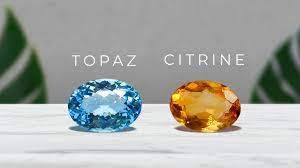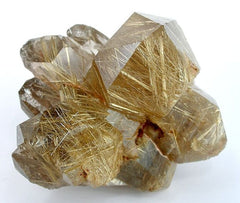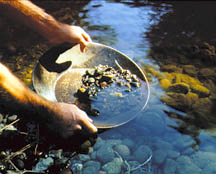
We're now well into August, and the birthstone for this month is the sparkling peridot. To celebrate this olive green stone, I am going to be posting some useful information and interesting facts on the gem.
How did the peridot get its name?
There are a few theories as to how the peridot got its name: according to the OED, an alteration of the Anglo-Norman word 'pedoretés' (opal) could offer one explanation. Another theory is that the name derives from the Arabic word 'faridat', meaning 'poor man's emerald'. Peridots have also been called 'chrysolith' (derived from a Greek word meaning 'gold stone') and 'olivine', due to its green colouration.
The origins of peridot

Peridot is commonly found in mafic rocks. The volcanic island of Zabargad (St. John) in the Red Sea has been a historically important peridot deposit. Most of the world’s peridot supply comes from Arizona, but other sources include Brazil, China, Myanmar, Pakistan and Africa.
Peridot also forms in a fraction of lavas, and in the upper mantle (about 20 to 55 miles deep). It is then brought to the surface by tectonic or volcanic activity.
Identifying a peridot
Peridots are relatively easy stones to identify. Here are some common identifying features of the gemstone:
- It is one of the few gemstones that occurs only in an olive green colour.
- It is an iron magnesium silicate and the intensity of its green colour depends on how much iron is present in the crystal structure.
- It has no resistance to acid.
- It is known to form a cat's eye chatoyancy (asterism) in the form of four ray stars.
- Its strong double refraction is often a very distinguishing trait.
Gemological properties
Mineral: Olivine
Chemistry: (MgFe)2SiO4
Crystal System: orthorhombic
Density/Specific Gravity: 3.34
Mohs Hardness: 6.5 to 7.9
Refractive Index: 1.654-1.690
Birefringence: 0.035 to 0.038
Buying a peridot
When buying peridot, it can generally be assessed with the same criteria as diamonds: colour, clarity, cut and carat to determine value.
The finest peridots have a lime to olive green hue, with no hints of brown or yellow. Its vivid colour will not change under artificial light. The deepest and most intensely green-coloured peridots are generally the most valuable. The highest quality gems will have no inclusions visible to the naked eye. Although dark spots may be seen under a microscope, eye-clean gems are abundant.
Peridot is not typically treated or enhanced, although some paler stones may be coated to enhance their colour. Imitation peridot (typically of synthesised spinel or sapphire) can sometimes be found.

Rich deposits of peridot were discovered in Pakistan in the 1990s. As a result it is a relatively inexpensive stone in smaller grain sizes, but prices increase for larger stones. Commercially mined peridots generally measure from 6mm to 13mm, which usually makes faceted stones around one carat in size. Stones as large as 22 carats have been found in Arizona, where most of the world's peridot is found. The largest yet discovered is a 310 carat gem, which is on display at the Smithsonian Museum in Washington, D.C. (pictured above).
Gemstone care
Although peridot is a relatively hard and durable stone, it is still softer than many other gems. It should thus be handled carefully to prevent scratches. It has a brittle tenacity, and can very occasionally burst under great stress, so care should be taken to avoid setting that expose the gem to high pressure (such as tension set rings). Intense temperature/climate changes should also be avoided.
Peridot is easily cleaned using warm, soapy water and a soft cloth. Then, simply rinse the stone well to remove any residue. Ultrasonic cleaners and heat steamers should be avoided when cleaning peridot.
When storing peridot, store them separately from other gems and jewellery. Where possible, wrap them in a soft cloth and place them inside a fabric-lined box to protect them.
Peridot history and lore
Peridot is one of the oldest known gemstones in the world. Records document the mining of the gem as early as 1500 BCE, and it is believed that Cleopatra's documented emerald collection may actually have been peridot.
Zabargard, a tiny island in Egypt's Red Sea, is the first documented source of peridot, dating back as far as four thousand years. The Ancient Egyptians used to call peridots the 'gem of the sun', as it was thought to protect against the terrors of the night. The inhabitants of the island were forced to work night and day to extract the gems for the Pharaoh, as their radiance meant they could even be found after nightfall.
The location of the island was lost for centuries, and it was only rediscovered in 1905. Throughout the following decades, the mines of Zabargad produced millions of dollars worth of peridot, but by the late 1930s the supply had been largely exhausted.
Peridot is mentioned in many ancient texts, usually as 'chrysolite': in this context, the stones were usually used to make carved talismans. The gemstone is also mentioned in the Bible under the Hebrew name of 'pitdah', and was considered sacred by early Christians. Even today, Catholic Bishops traditionally wear a ring of peridot and amethyst to symbolise their purity and morality.
Later, in the Middle Ages, Europeans brought peridots back from the Crusades - largely for use in churches. One of the most famous stones - the one adorning the shrine of the Three Holy Kings in Cologne Cathedral - was for centuries believed to be an emerald, before it was correctly identified as peridot.
In the Baroque period, peridot experienced a short resurgence in popularity, before being largely forgotten once more. Napoleon used peridot gems to assure his wife, Josephine, of his undying love for her (of course, this was before the annulment of their marriage in 1810).
Peridot is traditionally associated with the planet Saturn.
Peridot jewellery
Peridot is a beautiful gemstone which is well-suited for use in jewellery. It is relatively hard and has good durability, rendering it suitable for most types of jewellery (including types designed for everyday wear, as its hardness is comparable to quartz). It possesses an attractive colour and is affordably priced, and many jewellers favour it as a result. Its hue also makes it a popular choice for both men's and women's jewellery. It is also often used for August birthstone jewellery.
Because it is an abundant jewel, peridot can be found in many different shapes and sizes. This makes it ideal for earrings, sets and other designs which require well-matched stones.
Cufflinks, tie pins and pendants are excellent uses of the stone for men. For women, bracelets, necklaces, pins, brooches and earrings are all beautiful ways to accessorise using peridot.
Related gems
Peridot is a transparent gem variety of olivine, a substance composed of fayalite and forsterite. These minerals are rich in iron and magnesium respectively, and the iron content is what gives peridot gems their colour.

As previously noted, peridot is sometimes referred to as 'chrysolite', which has historically been used to refer to several green and yellow-green gemstones. Other gems that have been labelled 'chrysolite' include chrysoberyl, zircon, tourmaline, topaz and apatite. See above for an image showing green apatite crystals.










Leave a Comment